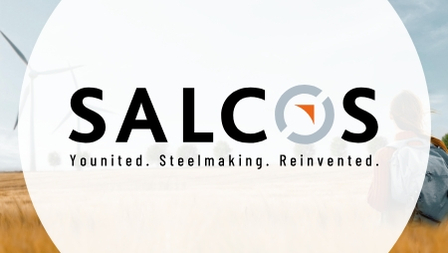Customized Hot-rolled strip
09.09.2020 | Salzgitter Flachstahl GmbH

Hot-rolled strip is used in a wide variety of ways as a pre-material for a wide range of steel products and is usually only put to its end use after various processing steps.
The component designer usually decides on the suitability of a material or steel grade and the required dimensions on the basis of officially available material data, standards or his own experience. The dimensions, surface, microstructure and, with restrictions, the chemical composition are mainly relevant for the end product, as they are significant for later processing. Within the process chain of the manufacturing process, all sub-steps must be defined with regard to possible additional requirements, as each production process places special demands on the material. Positive results in one production process rarely lead to similarly good results in another.
What does the term "customized" mean in the context of hot-rolled strip?
"Customized clothing" usually refers to the mass production of clothing tailored to the customer's individual needs. The customer's wishes and requirements are incorporated into the product and implemented during industrial production.
If we replace the term "clothing" with hot-rolled strip, it becomes clear that it is no longer standard product, but is customized to the wishes of the customer.
To enable the steel manufacturer to produce and supply this custom-made product, the customer's wishes must be defined clearly and as comprehensively as possible (cf. DIN EN 10021 Section 4) and agreed with the steel producer - naturally within the feasible limits, which are based on the existing plant, processes, input materials and, last but not least, on the laws of nature (e.g. temperature-dependent diffusion processes, segregation, etc.).
What can Salzgitter Flachstahl offer as a supplier of semi-finished products?

Let us take a look at the process from crude steel to the ready-to-install seat unit as an example.
The steel mill produces the basis for the desired quality. Today, a standard confirmation is no longer sufficient by far. This also includes undesirable accompanying elements (such as sulphur) as well as the elemental components. The "customization" already starts with specially agreed customer-specific analysis catalog. For the seat rail, for example, sulfur contents of a maximum of 0.003% must be achieved in order to guarantee the forming of the cold-rolled strip into the seat rail as well as the durability of the part in the event of an accident. In a 200 t batch, this may be a maximum of 6 kg of sulfur. This proportion is very low and corresponds, for example, to the typical proportion of sulfur in wine.
The respective specialist of the individual process step usually loses expertise with increasing distance from the OEM, usually the hot strip producer does not even know the end product. In addition, safety margins and specific requirements are defined for each product stage, e.g. for analysis, because, for example, individual elements or tolerances can have a decisive influence on the customer's subsequent process.
Development / process chain on the example of an automotive component:
Automobile → Assembly → Component → (Pressed) part → Blank → Strip → Cold strip → Hot strip → Slab

However, the chemical composition of the steel alone, which conforms to the specification, is however not sufficient by far to produce a component that functions in continuous use, for example. The slab, which is still 250 mm thick, must be rolled to a hot strip thickness optimised for the customer. Thanks to highly automated process control and modern plant technology, such as CVC rolling, Salzgitter Flachstahl is able to offer the narrowest thickness tolerances and tailored cross sections on its state-of-the-art hot strip mill.

Here again, it is possible - and desirable - to produce tolerances that are considerably tighter than those specified in the standard. The narrowest thickness tolerance is up to one fifth of the standard tolerance or ± 0.06 mm, depending on the steel grade and dimensions. These 60µm correspond to the thickness of a euro banknote and must be maintained for a 30,000 kg hot strip weighing several kilometers.
The microstructure required by the customer is either agreed directly or results from the ordered steel grade. Here, too, properties can be agreed by defining customized process parameters such as temperature specifications during rolling. The degree of forming, rolling speed, final rolling and coiling temperature as well as the type of cooling before coiling offer numerous variation possibilities and allow the production of different steel grades from one and the same chemical analysis.
Thanks to the clear process specifications, reproducibility of the hot strip quality is ensured.
For made-to-measure suits, the tailor has to determine the dimensions and requirements directly at the customer's site and can then use his available raw materials and tools to produce a high-quality product that meets the customer's wishes. The steel processing is much more complex and is influenced by numerous customer requirements along the process chain. For this reason, the necessary individual requirements for each process step should be coordinated as best as possible and always take into account what is technically possible or necessary.
This is how several customized intermediate products along the process path will result in a perfectly finished end product for the customer.







